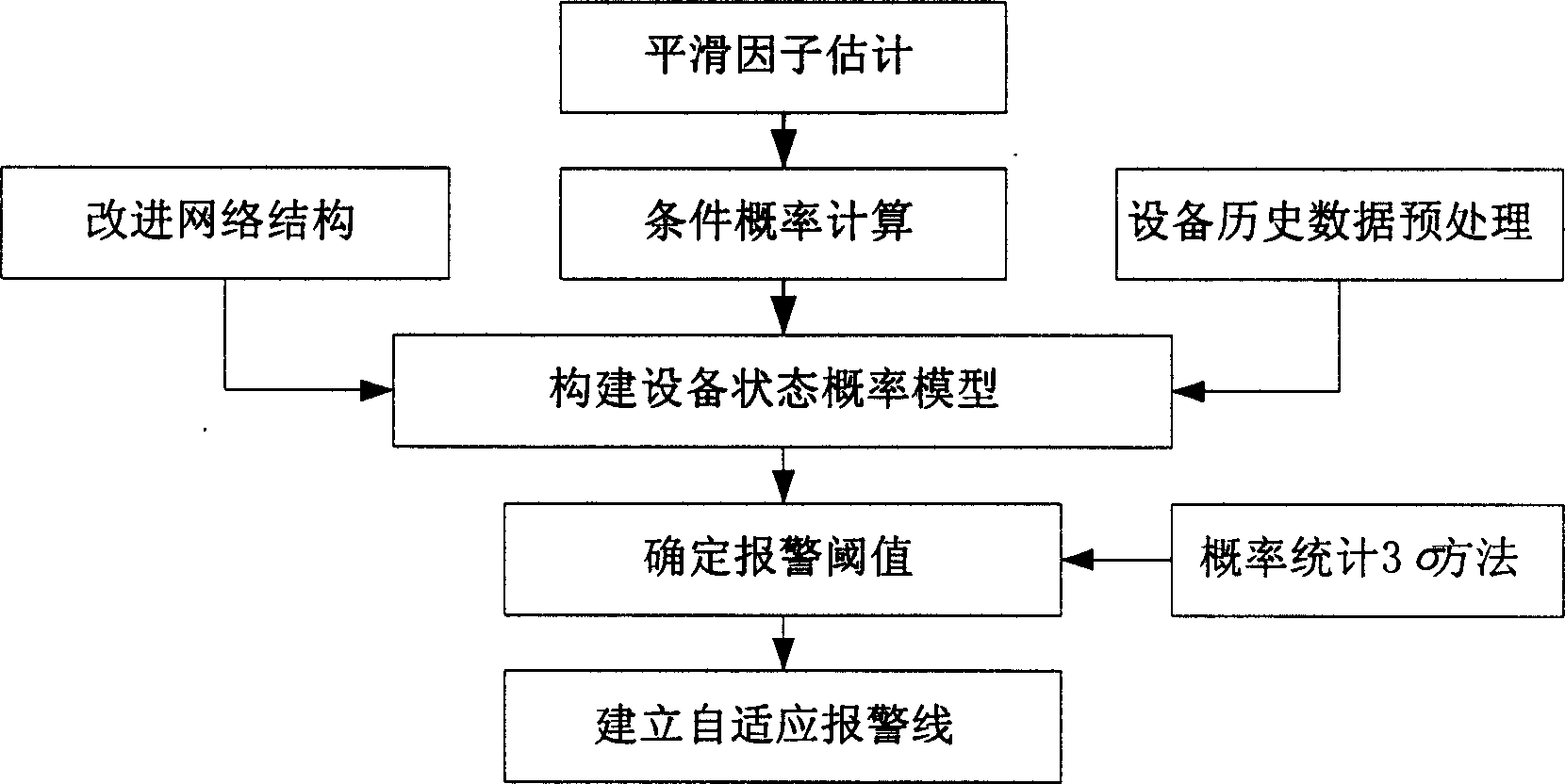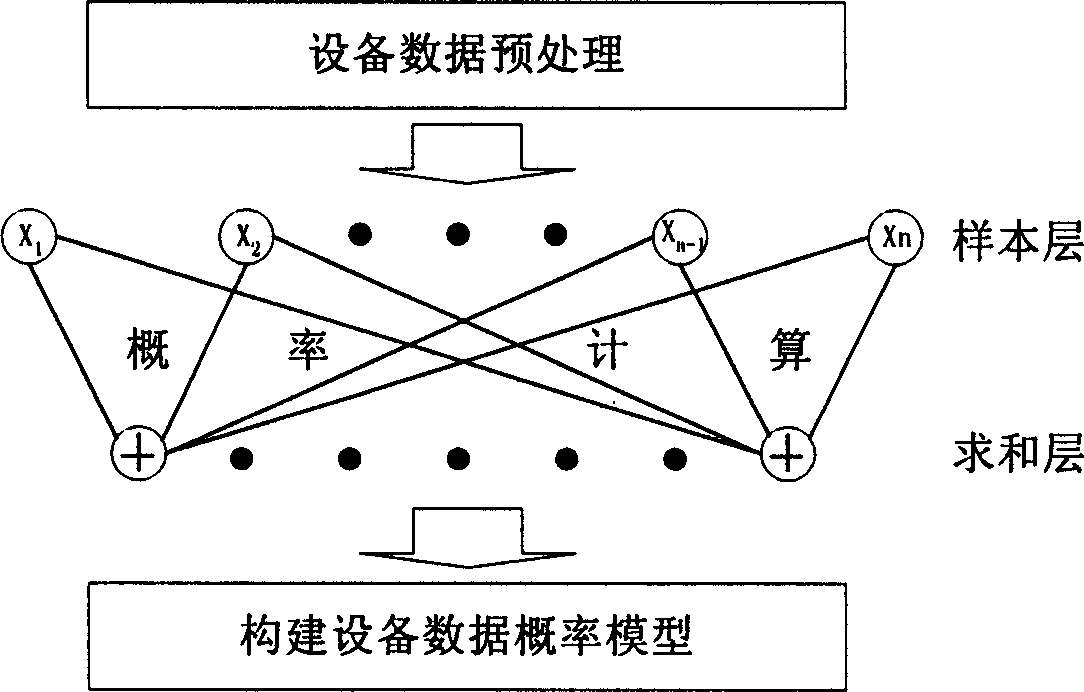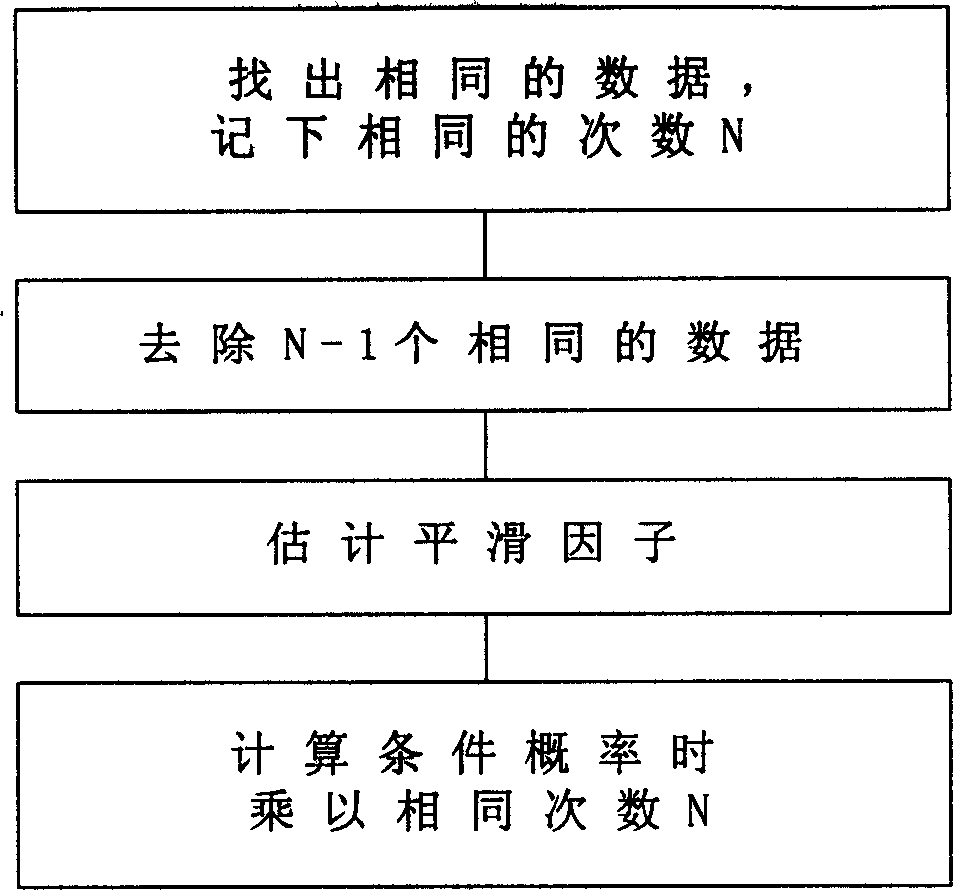Self-adapt dynamic apparatus status alarming method based on probability model
A technology of dynamic self-adaptation and equipment status, applied in complex mathematical operations and other directions, it can solve the problems of differences in monitoring quantities, failure to take into account field equipment, and inconspicuous guiding significance, so as to prevent false alarms and avoid false alarms.
- Summary
- Abstract
- Description
- Claims
- Application Information
AI Technical Summary
Problems solved by technology
Method used
Image
Examples
Embodiment Construction
[0030] In order to understand the present invention more clearly, the present invention will be further described in detail below with reference to the accompanying drawings and embodiments.
[0031] see figure 1 , figure 1 A flow chart for the entire implementation steps. According to the technical solution of the present invention, the specific implementation steps of the present invention are as follows:
[0032] 1. Obtain the historical data of equipment operation. Historical data can be a monitoring physical quantity that reflects the state of the equipment, or a specific index calculated from the vibration waveform, or various process quantity data during the operation of the equipment.
[0033] 2. According to the principle and network structure of the improved probabilistic neural network, establish the equipment state probability model, refer to figure 2 .
[0034] 3. Preprocess the historical data of equipment operation. The main processes include: normalizatio...
PUM
 Login to View More
Login to View More Abstract
Description
Claims
Application Information
 Login to View More
Login to View More - R&D
- Intellectual Property
- Life Sciences
- Materials
- Tech Scout
- Unparalleled Data Quality
- Higher Quality Content
- 60% Fewer Hallucinations
Browse by: Latest US Patents, China's latest patents, Technical Efficacy Thesaurus, Application Domain, Technology Topic, Popular Technical Reports.
© 2025 PatSnap. All rights reserved.Legal|Privacy policy|Modern Slavery Act Transparency Statement|Sitemap|About US| Contact US: help@patsnap.com



